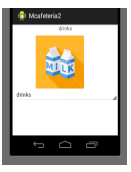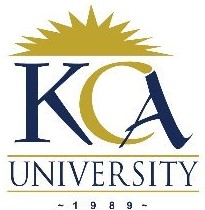 UNIVERSITY EXAMINATIONS: 2018/2019
UNIVERSITY EXAMINATIONS: 2018/2019
EXAMINATION FOR THE DEGREE OF BACHELOR OF SCIENCE IN
INFORMATION TECHNOLOGY/ BACHELOR OF BUSINESS IN
INFORMATION TECHNOLOGY
BIT3209 BBIT311 MOBILE PROGRAMMING
FULL TIME/PART TIME/DISTANCE LEARNING
DATE: DECEMBER, 2018 TIME: 2 HOURS
INSTRUCTIONS: Answer Question One & ANY OTHER TWO questions.
QUESTION ONE (COMPULSORY) [30 MARKS].
a). Briefly explain functions of the following components of a mobile application
(i) Oncreate() method (2 Marks)
ii) Activity (2 Marks)
b) Describe the meaning of the term intent in the context of mobile programming. (2 Marks)
c). Briefly explain two reasons why Android platform is preferred by developers when
developing mobile applications (2 Marks)
d). Describe three types of native mobile applications (3 Marks)
e). Describe two differences between HTML and XML languages (2 Marks)
f) Describe the meaning of the term namespace as used in android applications development.
Write a sample XML code to illustrate how android name space is declared. (4 Marks)
g) Describe the meaning of the term input controls as used in mobile programming. Write XML
sample code for declaring one input control. (4 Marks)
h) Write an XML that displays the following output when executed in an emulator or real device

(5 Marks)
i) Briefly explain the purpose of ‘ Setcontentview(R.layout.main)’ in the following lines of code
(2 Marks)
Public void oncreate (Bundle savedinstancesstate)
{ …..
Setcontentview(R.layout.main);
… }
j) Briefly describe the meaning of the term data adapter as used in mobile application development.
(2 Marks)
QUESTION TWO
(a) Describe the meaning of the statement ‘ life cycle of an activity’ and explain five states that an
activity goes through during a life cycle. Draw a well labelled diagram that illustrates the
lifecycle. (12 Marks)
(b) Briefly explain the following XML lines code (4 Marks)
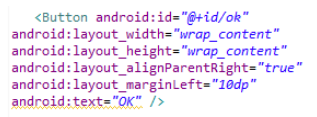
(c) Describe the differences between views and view groups in the context of mobile
programming. State one example for each case (4 Marks)
QUESTION THREE
(a) Describe any two characteristics of mobile web applications (2 Marks)
(b) Briefly explain the meaning of the following terms as used in mobile programming. Write a
sample code that demonstrates implementation each term
i) Button (4 Marks)
ii) Spinner (4 Marks)
iii) Radio Buttons (4 Marks)
c) Describe the functions linear layout in the context user interface of a mobile application.
Write XML code that demonstrates the implementation of the following hierarchical structure of
mobile user interface (6 Marks)
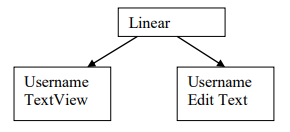
QUESTION FOUR
(a) Briefly explain how you understand the following lines of code as used in mobile
programming (4 Marks)
<Button
android:layout_width=”fill_parent”
android:layout_height=”wrap_content”
android:text=”Login”
android:textColor=”#000000″
/>
(b) Describe the importance of using text boxes in the user interface of mobile applications
(2 Marks)
(c) Write an XML code that implements the following user interface of an android mobile
application
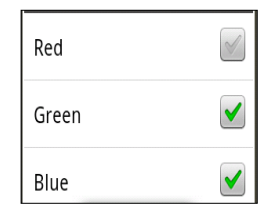
(6 Marks)
(d) Briefly describe three functions of a manifest XML file in mobile programming (3 Marks)
(e) Write a sample XML code that implements the following user interface of a mobile
application (5 Marks)
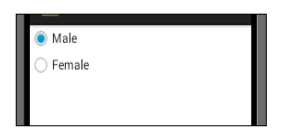
QUESTION FIVE
a) Describe the meaning of the term destroyed state in the context of mobile programming
(2 Marks)
b) Describe four constraints that are associated with mobile devices (4 Marks)
c) Briefly explain the purpose of the following two lines of code as used in android
programming (2 Marks)
EditText email=(EditText) findViewById(R.id.edtemail);
EditText phone=(EditText) findViewById(R.id.edtphone);
d) Describe the meaning of the following XML terms as used in mobile programming. Write
sample XML code to illustrate implementation of each term
(6 Marks)
i) XML tag
ii)XML element
iii) XML attribute
e) Write an XML or java code that displays the following output when executed in an emulator
or real device (6 Marks)
